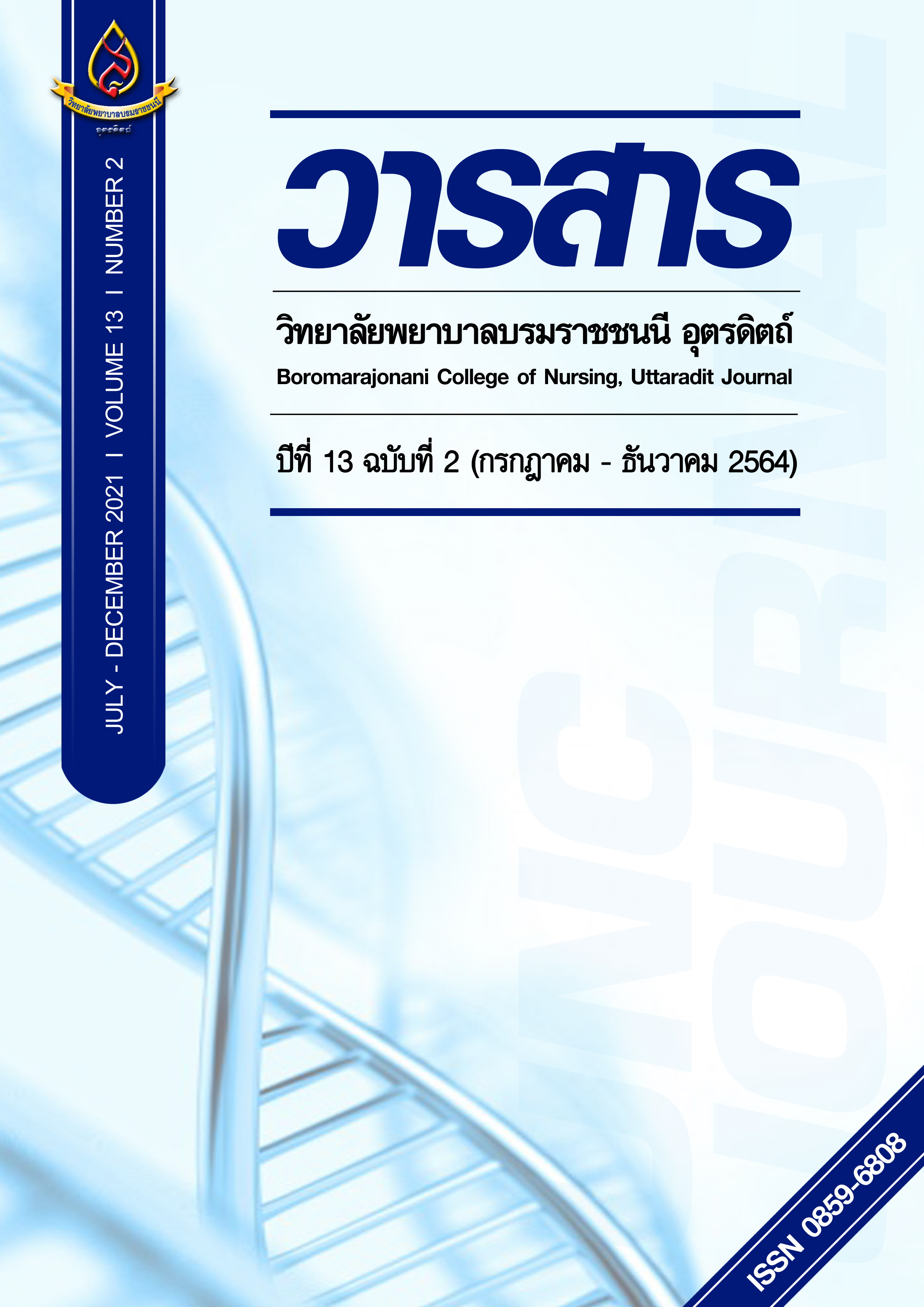การพัฒนาโปรแกรมการเรียนรู้เพื่อการป้องกันพฤติกรรมการข่มเหงรังแกในโรงเรียน
Main Article Content
บทคัดย่อ
การวิจัยและพัฒนาครั้งนี้ มีวัตถุประสงค์เพื่อ 1) ศึกษาพฤติกรรมการข่มเหงรังแกของเด็กวัยเรียน ในจังหวัดลำปาง 2) พัฒนาโปรแกรมการเรียนรู้เพื่อการป้องกันปัญหาพฤติกรรมการข่มเหงรังแกในโรงเรียน 3) ศึกษาประสิทธิผลของโปรแกรม การวิจัยแบ่งออกเป็น 3 ขั้นตอน คือ ขั้นตอนที่ 1 ขั้นศึกษาพฤติกรรมการข่มเหงรังแกของเด็กวัยเรียน กลุ่มตัวอย่าง คือ นักเรียนชั้นประถมศึกษาและมัธยมศึกษาตอนต้นในจังหวัดลำปาง จำนวน 370 คน ได้จากสุ่มแบบหลายขั้นตอน เครื่องมือวิจัย คือ แบบวัดพฤติกรรมการข่มเหงรังแกในสถานศึกษา วิเคราะห์ข้อมูลโดยใช้ค่าเฉลี่ยและส่วนเบี่ยงเบนมาตรฐาน ขั้นตอนที่ 2 ขั้นการพัฒนาและประเมินคุณภาพโปรแกรมโดยใช้แบบประเมินคุณภาพของโปรแกรม วิเคราะห์ข้อมูลโดยใช้ค่าเฉลี่ย และส่วนเบี่ยงเบนมาตรฐาน และขั้นตอนที่ 3 ขั้นศึกษาประสิทธิผลของโปรแกรมโดยใช้แบบแผนการทดลองหนึ่งกลุ่มวัดผลก่อนและหลังการทดลอง กลุ่มตัวอย่าง คือ นักเรียนชั้นมัธยมศึกษาปีที่ 1 จำนวน 42 คน เครื่องมือที่ใช้ในการวิจัย ได้แก่ แบบประเมินทักษะการป้องกันการข่มเหงรังแกและแบบประเมินความพึงพอใจต่อโปรแกรม วิเคราะห์ข้อมูลโดยใช้ ค่าเฉลี่ย ส่วนเบี่ยงเบนมาตรฐานและสถิติทดสอบที ผลการวิจัยพบว่า
1. การกระทำพฤติกรรมการข่มเหงรังแกผู้อื่นของเด็กวัยเรียนทั้งทางด้านวาจาและด้านร่างกายอยู่ในระดับน้อย ส่วนการถูกกระทำพฤติกรรมการข่มเหงรังแกทางด้านวาจาและด้านร่างกายอยู่ในระดับปานกลาง
2. โปรแกรมการเรียนรู้เพื่อการป้องกันปัญหาพฤติกรรมการข่มเหงรังแกในโรงเรียน ประกอบด้วยคู่มือจัดการเรียนรู้และชุดเกม 4 ชุด ที่ประกอบด้วย เกมส่งเสริมคุณค่าในตนเอง การยอมรับนับถือผู้อื่น การกล้าแสดงออกและการเผชิญปัญหา ผลการตรวจสอบคุณภาพโปรแกรม พบว่า คุณภาพในภาพรวมอยู่ในระดับสูง
3. ประสิทธิผลของโปรแกรม พบว่า คะแนนเฉลี่ยของทักษะการป้องกันการข่มเหงรังแกผู้อื่นและการป้องกันการถูกข่มเหงรังแก หลังการใช้โปรแกรมสูงกว่าก่อนใช้โปรแกรม อย่างมีนัยสำคัญทางสถิติที่ระดับ .05 และความพึงพอใจในการใช้โปรแกรม อยู่ในระดับมาก
Article Details
บทความหรือข้อคิดเห็นใดใดที่ปรากฏในวารสารวิจัยการพยาบาลและวิทยาศาสตร์สุขภาพ เป็นวรรณกรรมของผู้เขียน ซึ่งบรรณาธิการหรือสมาคมศิษย์เก่า ไม่จำเป็นต้องเห็นด้วย และบทความที่ได้รับการตีพิมพ์เผยแพร่ถือเป็นลิขสิทธิ์ของวารสารวิจัยการพยาบาลและวิทยาศาสตร์สุขภาพ
เอกสารอ้างอิง
Budi, A. K. , Tinneke, A.T., Helena, C. D. & Erna, E. (2015). Effectiveness assertive training of bullying prevention among adolescents in West Java Indonesia. International Journal of Nursing, 2(1), 128-34.
Chumpalee, S. & Thaweekoon, T. (2019). Bullying among middle school students in a province of Central Thailand. The journal of psychiatric nursing and mental health, 33(3), 128-145. (in Thai).
Kuankaew, W., Phongkhunakorn, N. & Robkob, W. (2021). The development of learning innovation for cyberbullying prevention and cyberbullying victimization among Thai Youth. Journal of Nursing and Health Research, 22(2), 28-40. (in Thai).
Laeheem, K. (2014). Factors related to students’ bullying behaviors in Islamic private schools, Songkhla provinces. Srinakharinwirot Research and Development Journal, 6(12), 14-30. (in Thai).
Malone, T.W. (1981). What Makes Computer Games fun. BYTE, 6(12), 258-277
Miline, A. (2003). Teach yourself counselling. U.S.A.: McGraw-Hill
Myers, C-A., & Cowie, H. (2013). University students’ views on bullying from theperspective of different participant roles. Pastoral Care in Education, 31(3), 251-67
Office of the United Nations High Commissioner for Human Rights (OHCHR). (2020). Declaration of basic principles of justice for victims of crime and abuse of power. Retrieved (2020, March 8). from
https://www.ohchr.org/en/professionalinterest/pages/victimsofcrimeandabuseofpower.aspx
OuMoore, M. & Kirkham, C. (2001). Self-esteem and its relationship to bullying behavior. Aggressive Behavior, 27, 269-83.
Pavakul, K. & Sukanich, P. (2011). A study of bullying behavior and the level of self-esteem in a Bangkok Secondary School. Journal of the Psychiatric Association of Thailand, 56 (1), 35-44. (in Thai).
Ponnopadol, C. (2017). Cyber-bullying among junior high school students. Retrieved (2020, March 22). from https://www.prachachat.net/ict/news-146408. (in Thai).
Rotemanunthakrit, N. (2013). Cross-cultural communication behaviors and school-bullying. Master of Communication Arts Department of Communication Arts, Faculty of Communication Arts, Chulalongkorn University. (in Thai).
Sakkarinkul, C. & Watcharasindu, A. (2014). Prevalence of bullying and associated psychosocial factors among lower secondary school students in Muang, Chiangmai. Journal of the Psychiatric Association of Thailand, 59(3), 221-30. (in Thai).
Sootinan-ophat, R., Inchaithep, S. & Mangkhang, W. (2020). The factors analysis of bullying scale for students in secondary school. Journal of Nurses Association of Thailand Northern Office, 26(1), 13-26. (in Thai).
Srisawad, P. (2018). A development of bullying prevention in school model. Silpakorn University (Humanities field Social Studies and Arts), 11(1), 3553-67. (in Thai).
Sutthipittayasak, T. & Robroo, I. (2020). Designing a module of game based learning activities for enhancing conceptual thinking skills of the 6th grade students in the Schools under the Uthaithani Primary Educational Service Area Office 1. SSRU Graduate Studies Journal, 13 (1), 127-143. (in Thai).
Thongtanongsak ,P. (2017). A study of bullying behavior among junior high school students at Nong Khaem School under the Office of Education. Graduate Studies Journal Faculty of Education, Ramkhamhaeng University. Retrieved (2020, March 22). from http://www.edu-journal.ru.ac.th/index.php/abstractData/viewIndex/1693.ru. (in Thai)
World health Organization. (2015). Youth violence: the health sector role in prevention and response. Retrieved (2020, September, 6). fromhttp://www.who.int/violence_injury_prevention/violence/youth-violence- infographic-2015.pdf.


